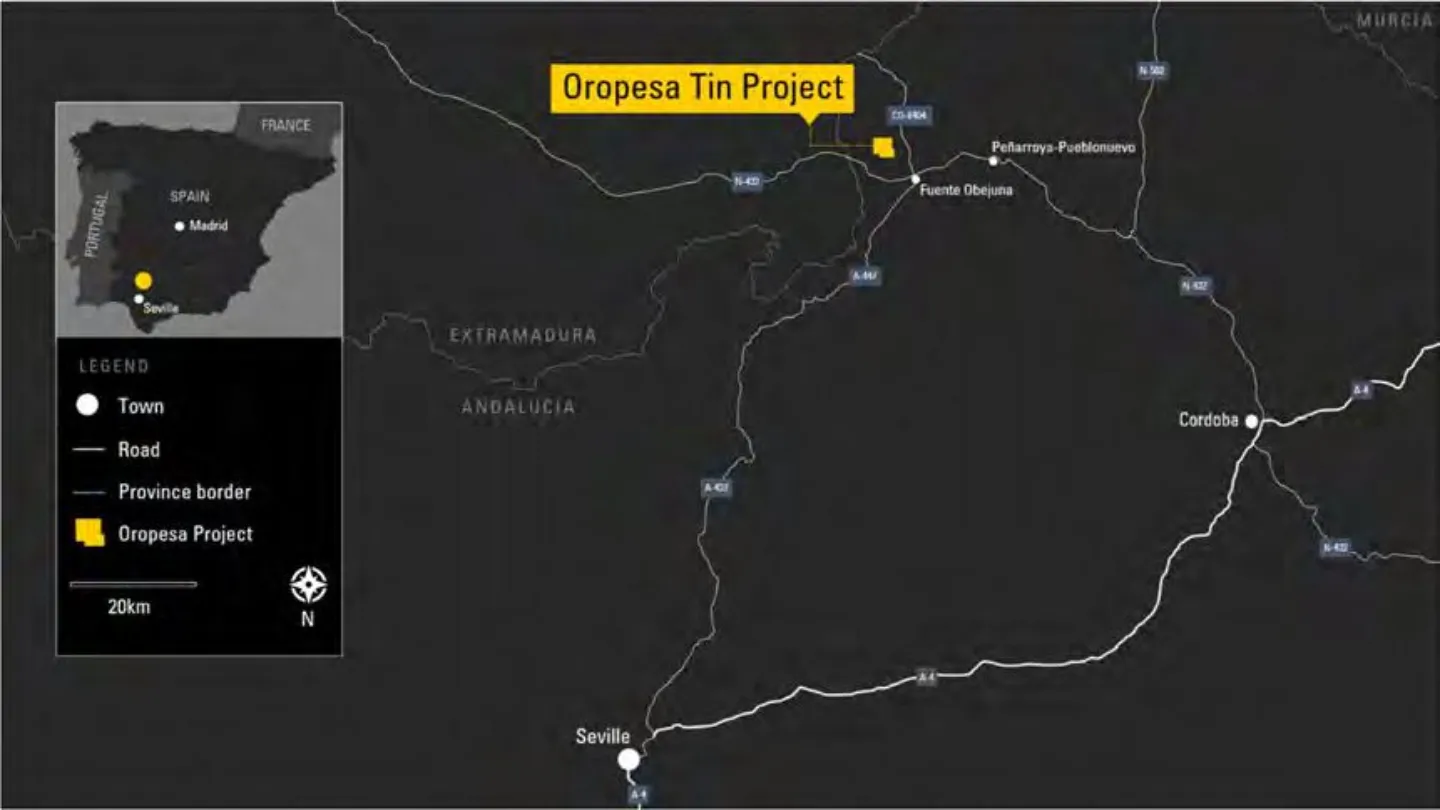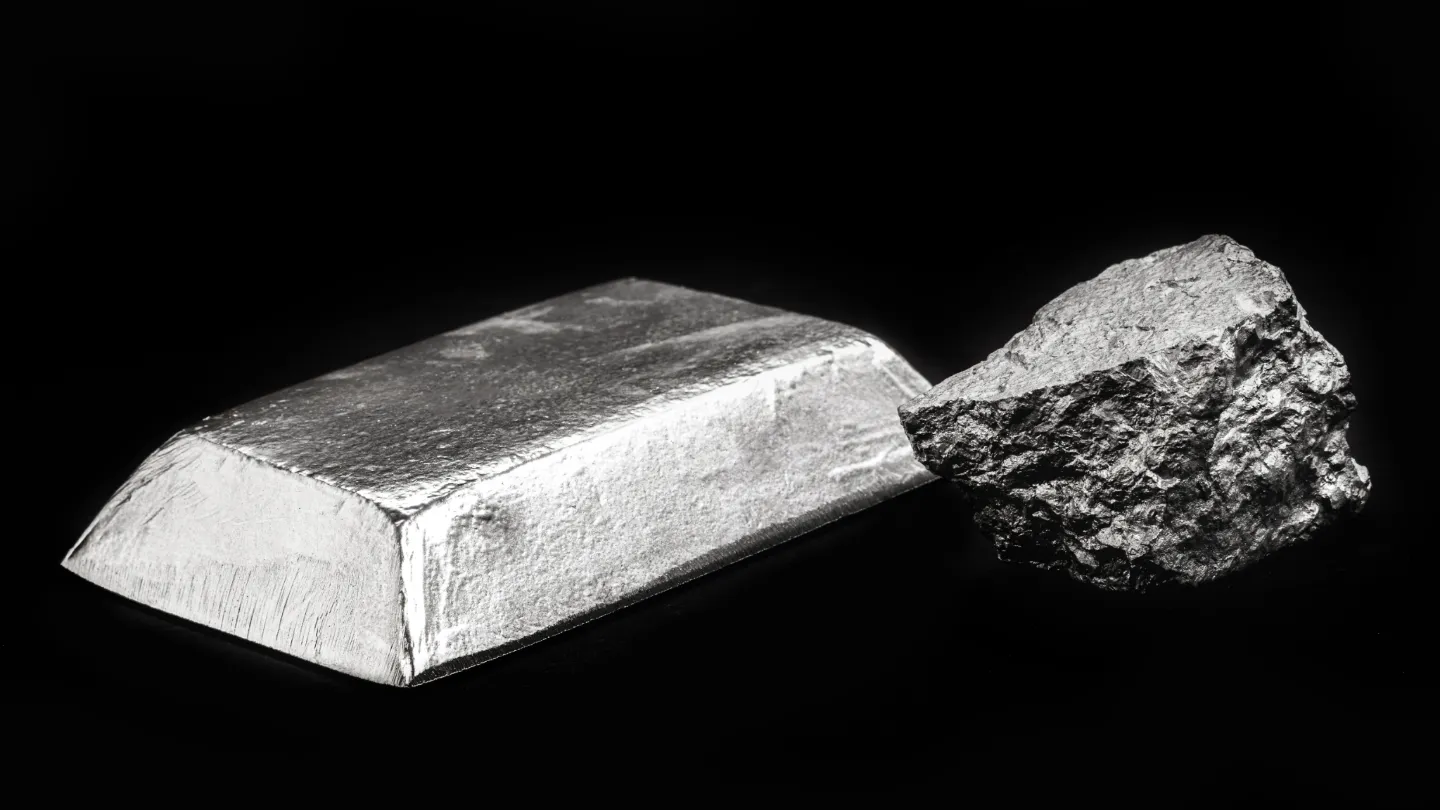The Oropesa Tin Project, located in Spain’s Córdoba Province, is considered one of the largest undeveloped open-cut tin deposits globally. It is currently the only tin project under active development within the European Union.
The project is owned by Australian Securities Exchange (ASX)-listed Elementos through its wholly owned subsidiary, Minas de Estaño de España (MESPA).
Oropesa is at an advanced development stage. Elementos published the results of a Definitive Feasibility Study (DFS) in April 2025.
The DFS outlines a 1.4 million tonnes per annum (Mtpa) open-pit mining operation. It will produce an average of 3,405 tonnes of contained tin per year, in the form of tin ingot, over a 12-year mine life.
Capital expenditure for the development is estimated at around €149m, including a 10.4% contingency.
Based on a Final Investment Decision (FID) expected in 2025, the project could commence tin concentrate production by late 2027.
Oropesa Tin Project Location
The Oropesa Tin Project is situated in the municipality of Fuente Obejuna, in the Guadiato Valley in northern Córdoba Province. This is within Spain’s Andalucía Autonomous Region.
The project area comprises an exploration concession (Investigation Permit No. 13.050) covering 13 square kilometres. It lies approximately 75km north-west of the city of Córdoba and 180km north-east of Seville, the regional capital.
Historically, the Oropesa district has been a base metals and coal mining region, producing copper, lead, silver, iron, and coal.
Geology and Mineralisation
The Oropesa deposit lies within the Espiel Thrust Sheet, positioned between the Ossa-Morena and Central Iberian zones of the Iberian Massif in southern Spain.
The project area features a sequence of interbedded sandstones and conglomerates, with occasional siltstones and shales. The sedimentary units display complex geometries, indicative of a dynamic depositional setting influenced by syn-sedimentary faulting.
Subsequent tectonic activity, including reactivation of basin-controlling faults as strike-slip and reverse faults, has further deformed the stratigraphy, resulting in upright to locally overturned bedding and associated folding.
The deposit’s current geometry reflects two main deformation phases- an initial strike-slip to extensional phase during basin formation, followed by a later contractional overprint.
Tin mineralisation is predominantly of the replacement type, occurring mainly within granular sandstones at the contacts between sandstone and conglomerate layers. The tin is primarily present as cassiterite (97–99%), with minor amounts of stannite.
Smaller-scale fault- and structure-controlled mineralisation has also been identified at the property, associated with reverse thrust faults both bounding and within the deposit.
This mineralisation is linked with extensive leaching of the host rocks, silica alteration, and multiple generations of late-stage, disseminated to semi-massive sulphides.
Oropesa Tin Project Reserves
Based upon the previously published Mineral Resource Estimate of 19.6Mt at 0.39% Sn, the Oropesa Project DFS defines a Maiden Ore Reserve estimate of 15.9Mt (Proved and Probable) at 0.36%Sn.
This equates to contained metal of 57,894 tonnes of tin.
Mining and Processing
The Oropesa Tin Project will be mined using open-cut, truck-and-shovel methods. The mine plan includes a series of key processes such as the removal and stockpiling of topsoil, followed by drilling and blasting of both ore and waste material.
Waste will be loaded and transported to designated dumps, while ore will be hauled either to the run-of-mine (ROM) stockpile or directly to the crusher. Material rejected by the ore sorter will also be transported to the waste dumps.
Post-mining activities will involve rehandling waste to partially backfill the pit or cap the tailings storage facility. Additionally, dozers will be used to reshape waste dump slopes as part of site rehabilitation, which will be completed by covering these areas with topsoil.
The DFS process flow sheet for the Oropesa Tin Project was developed following a series of metallurgical testwork programmes. It includes seven main stages.
Initially ROM ore will undergo screening and crushing to reduce oversized material. Ore sorting will follow, where screened material is processed through sorters and re-crushed if needed, while fined material proceeds to grinding.
In the grinding stage, a ball mill and hydrocyclone circuit will reduce ore to a fine particle size.
This will be followed by sulphide flotation, conducted using rougher and cleaner stages with integrated regrinding to recover sulphide minerals. Gravimetric concentration will separate tin using gravity circuits tailored for coarse and fine particles, with additional regrinding, magnetic separation, and sulphide flotation for enhanced recovery.
Tin flotation will then separate tin from remaining gangue in rougher and cleaner cells. Finally, the dried tin concentrate will be produced via magnetic separation, multi-gravity separation, and pressure filtration.
Contractors Involved
Several entities contributed to the preparation of the Oropesa Tin Project DFS.
Resource development consultant Wave International served as Owners Engineer delivering the DFS and supported engineering management.
Minepro Solutions was responsible for project management, licencing and process design, while Optimal Mining solutions was in charge of mining engineering and ore reserves.
ERM Iberia was associated with Environmental Impact Study and Permit Submissions, Measured Group with geology, and Wardell Armstrong International for Metallurgical Laboratory.
Other contributors included Norvento Enerxia, Geociencias y Exploraciones Marítimas (GEM), Geolen Ingeniería, Terratec Geotechnia y Sonderos, Ayterra Estudios y Proyectos, Duro Felguera, AGQ Labs, ALS Labs, Universidad de Oviedo, Universidad de Córdoba, INERCO, VRIVM, BPDT & Co., and Nórdika – Salgueiro.




